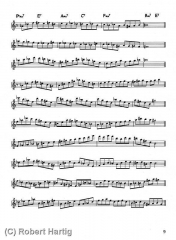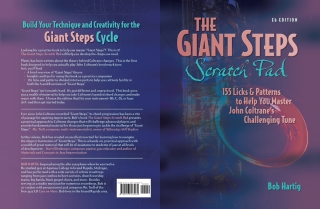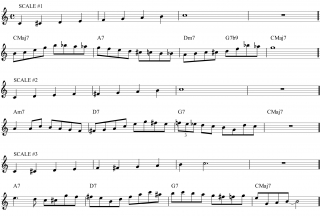Always one to open new areas of inquiry, searching out pristine topics glistening with intellectual dew, I recently posted this question on Facebook:
“What is jazz?”
Actually, one or two others before me may have given the subject some glancing bit of thought. I seem to recall blogging about it myself in the past. Wars may even have been fought over the matter. So maybe the question isn’t so novel after all. In fact, I’m quite certain it’s not.
Back in the nineteen seventies and early eighties, when I was studying music in college, the subject kept resurfacing with boring predictability in the letters section of Downbeat magazine. There’d be an article on some fusion band that had strayed from the sanctioned strictures of swing, bop, and tradition, and next month, you’d read one or two samples of the indignation felt by jazz purists. “THAT CRAP AIN’T JAZZ!” they’d opine helpfully. But their views would be countered by other letters from the Bold And Free who welcomed new trends and defended fresh approaches.
At first such exchanges were interesting. But after a while, as the same thoughts kept recycling from both ends of the jazz/not-jazz spectrum, the argument got old and then irrelevant. After all, what did I care? I still loved rock music, something many jazz musicians of the time detested. And much as I wanted to excel as a jazz saxophonist, I sucked. So from a practical standpoint, I couldn’t relate to the vitriol behind the statement “That ain’t jazz!”
In Light of Today
Thirty-five years later, much has changed in music, to say nothing of the world at large. Between jazz and other musical genres, the lines have blurred to the extent that the term jazz has become almost meaningless. Perhaps the jazz police had a point after all, then, in trying to preserve a sense of definition for a word which, in coming to mean so many things to so many people, now means almost nothing at all.
Though, is that really the case?
I can still listen to Louis Armstrong or Charlie Parker and say, with confidence, “That’s jazz.” And I can get an earful on YouTube of my favorite classic rock bands, such as Jethro Tull and Pink Floyd, and say with equal conviction, “That ain’t jazz.” Great music, absolutely; improvisational, without question; but jazz, no.
It doesn’t have to be jazz to be good. There’s a powerful lot of fantastic music in this world today, with superb musicians of many stripes bringing their influences and contributions to the table. And it is a table, an art table. It’s not a melting pot. For all the kinds of music available to my ears today, I don’t hear homogeneity arising as a result of allowing different genres to interbreed. Instead I hear creative combinations; and for the many different forms, both pure and hybrid, and for their practitioners, I see an appreciation and respect that didn’t exist back in my college days.
You can spend your emotional and intellectual energy defining the color blue, speaking out on its behalf and defending its sacredness. Ditto the color green, if you’re a lover of green; or red, if you’re of the red camp; or yellow, or purple, or what have you.
Or you can take some of this color and some of that and some of those and make a painting. Why not?
The days of jazz/not-jazz haven’t entirely disappeared, nor are they likely to. And that’s not a bad thing. Conceptually, jazz does need a perimeter, fuzzy though it may be, if the word is to have meaning. But I think fewer people care to make it into a heated issue. So maybe now “What is jazz?” can simply be an honest question that merits interesting, insightful, and enjoyable discussion.
In part 2 of this article, look for some of the different responses I received to my Facebook inquiry “What is jazz?” as well as some of my own thoughts on the matter.
(To be continued.)






